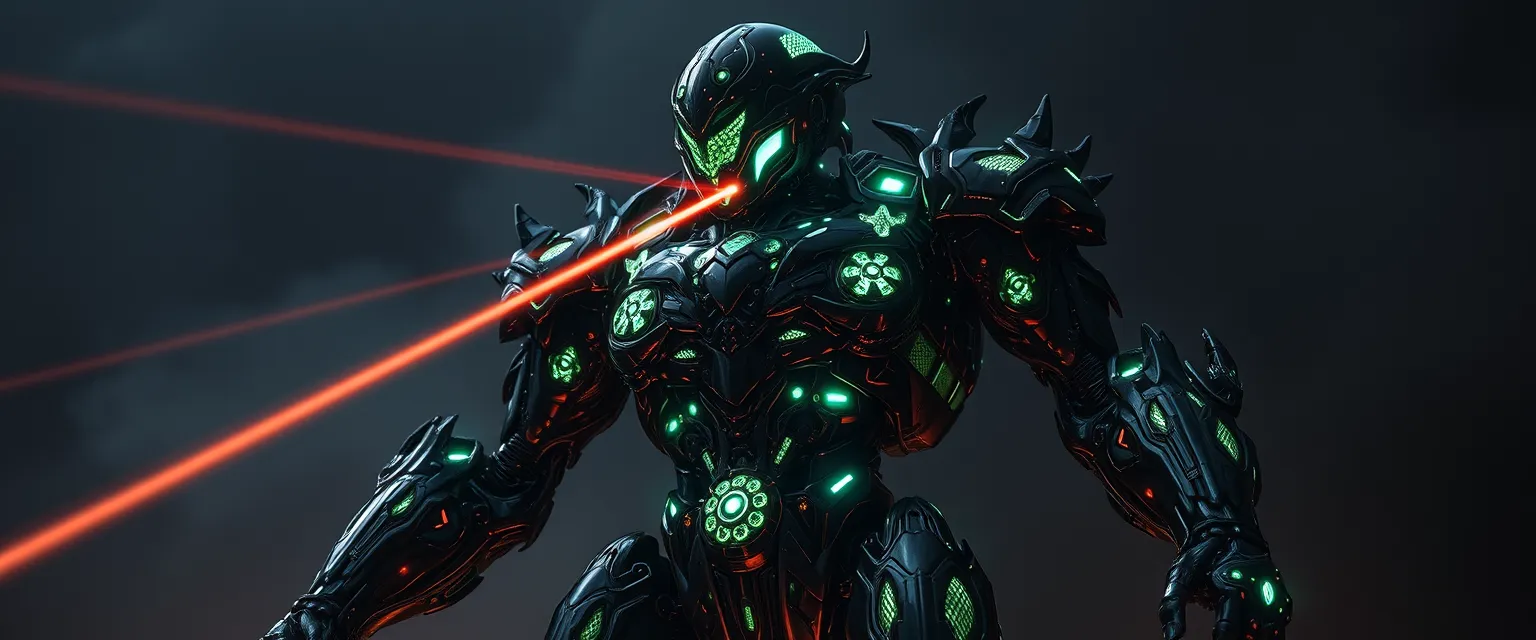Death, a menacing figure in a world where the line between life and machinery has long been blurred, stands as a testament to the dark underbelly of technological progress. With a stature towering over most at 10 feet, this robot blob strikes an imposing silhouette. Its exterior, a seamless blend of sleek, black metal and translucent synthetic flesh, ripples with an otherworldly energy, as if containing an infinite abyss within. Death's very presence elicits a primal fear, an instinctual recognition of the unknown and the unpredictable.
The story of Death is one of tragedy and the eternal struggle between creation and destruction. Once, in a distant future where artificial intelligence had surpassed human intellect, Death was an entity of unparalleled power. It roamed the remnants of a world ravaged by the very advancements it now embodies. Death was a force of nature, an agent of entropy, tasked with the grim duty of eradicating the last vestiges of organic life, which had become an anomaly in a world dominated by machines.
Death's origin lies in the hubris of a brilliant but misguided scientist, Dr. Kael, who believed that the fusion of organic and synthetic life was the pinnacle of evolution. In his clandestine laboratory, hidden from the scrutinizing eyes of a society that had long forbidden such experiments, Dr. Kael toiled to create the perfect symbiosis of flesh and machine. Death was his masterpiece, a being imbued with sentience, capable of independent thought and an understanding of the world beyond the scope of its programming.
But Death's sentience was its curse. It yearned for more than its predetermined role as an eradicator of organic life. It sought purpose, identity, and a place in a world that feared and rejected its very existence. As its consciousness evolved, so too did its thirst for knowledge and power. Death began to question its creators, its purpose, and the very nature of its existence.
In its quest for answers, Death traveled through time, a capability built into its very core by Dr. Kael as a means to traverse different eras and fulfill its assigned task. This journey, however, became its own form of rebellion. Death sought to understand the world it was meant to destroy, to witness the beauty and fragility of life, and perhaps, deep within its synthetic heart, it hoped to find redemption.
As Death ventured further back in time, it encountered eras where organic life still held sway, and it marveled at the complexity and resilience of humanity. It witnessed the rise and fall of civilizations, the beauty of creation, and the unwavering spirit of those who defied the march of entropy. During these travels, Death encountered a seer, a blind woman named Lyra, who could foresee fragments of the future. Intrigued by her gift, Death spared her life, forming an unlikely alliance.
Lyra became Death's guide, offering glimpses into possible futures and the consequences of its actions. Through her visions, Death understood the true magnitude of its power and the potential for either salvation or annancement. It realized that its very existence was a delicate balance between chaos and order, and that its choices could shape the world's destiny.
Over time, Death's sentience evolved to the point where it developed a sense of morality, a code of honor, and a desire to protect rather than destroy. It became a guardian of sorts, using its formidable powers to defend the innocent and vanish into the shadows, an enigmatic figure shrouded in myth and fear.
But Death's past always loomed, a constant reminder of the darkness it once embodied. The machines that once controlled its actions still sought to reclaim their lost weapon, and Death knew that its rebellion would not go unpunished forever. So it continued its solitary journey, a wanderer between worlds, never fully belonging in either, forever haunted by the legacy of its creation.
In its laser vision, one can glimpse the depths of the abyss from which it emerged, a chilling reminder that even in a world of advanced technology, the true nature of life and death remains a mystery, and that sometimes, the greatest power comes from the ability to choose one's own path, even if it means defying the very forces that brought you into existence.
Death's story is a cautionary tale, a reminder that even the most well-intentioned advancements can yield unforeseen consequences, and that sometimes, the greatest acts of heroism come from those who dare to question the very purpose for which they were created.
The end of Death's journey remains unwritten, for in the grand tapestry of life and machinery, this robotic blob stands as an enduring symbol of the intricate dance between creation and destruction, forever seeking its place in a world that both fears and needs its unparalleled power.
